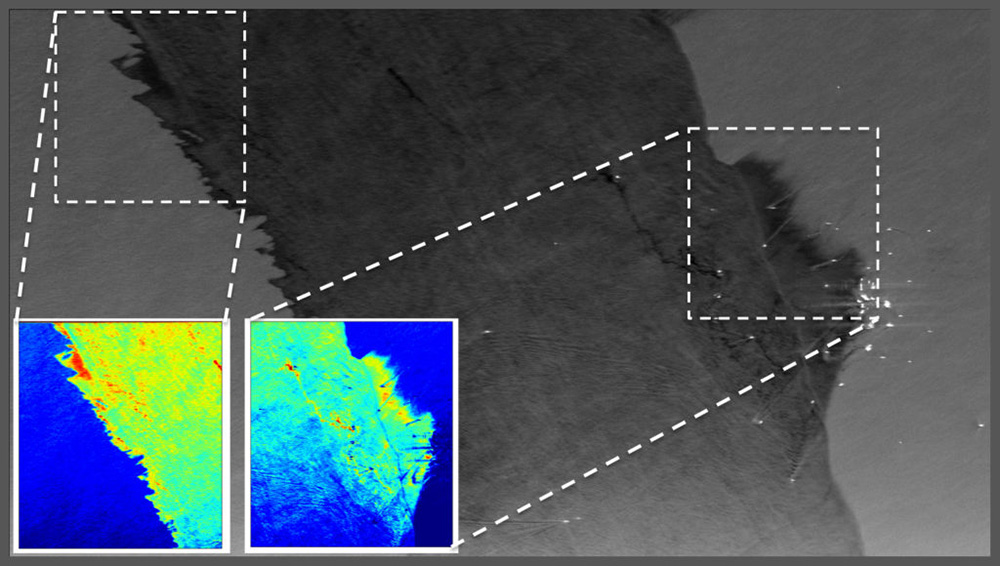ART CITIES:N.York-74 Million Million Million Tons
 Operating at the limits of human perception and detectability, the artists in the exhibition “74 million million million tons” create a new visual lexicon by which those at the threshold of politics can emerge: the refugee, the robot, the environment, and others on the outskirts of legality. Directly intervening in the moments before events coalesce into knowledge and narrative, they anticipate and account for a variety of human and non-human subjectivities by measuring, documenting, and observing instances of what is not yet widely known or accepted.
Operating at the limits of human perception and detectability, the artists in the exhibition “74 million million million tons” create a new visual lexicon by which those at the threshold of politics can emerge: the refugee, the robot, the environment, and others on the outskirts of legality. Directly intervening in the moments before events coalesce into knowledge and narrative, they anticipate and account for a variety of human and non-human subjectivities by measuring, documenting, and observing instances of what is not yet widely known or accepted.
By Efi Michalarou
Photo: Sculpture Center Archive
The artists in the exhibition “74 million million million tons” at SculptureCenter in New York, extract information from various sources and materials to bring forth new meanings. Shadi Habib Allah presents his work “A Defective Wave Shields Disparate Topographies” (2016) which consists of cell phones that play recorded communications obtained by the artist of Bedouin smugglers who use the 2G cellular networks in order to maintain secrecy and privacy. George Awde makes photographic works that capture and obscure the complex conditions and relationships that led to their production. Created mostly in Lebanon, where the artist lives, these intimate images show people in various locations embedded in covert social relationships. Carolina Fusilier‘s abstract paintings address the internal spaces of mechanical objects. Researching the modes in which machines (from cars to watches) are advertised, Fusilier depicts their internal material qualities using similar aesthetic techniques. Sidsel Meineche Hansen exhibits works related to her ongoing research into machine learning and surveillance technologies, investigating how advances made in pornography industries have a complex potential impact on privacy, gender, and sexuality. Hiwa K presents his video work “A View from Above” (2017), which tells the story of an unnamed man seeking political asylum in a European country. His efforts are rewarded when he pretends to be from a particular town and inadvertently displays knowledge that is more consistent with that of immigration officials than of the people living there. Nicholas Mangan shows a two-channel video titled “Ancient Lights” (2015) alongside a selection of collages from his related ongoing series “Ancient Lights (Brilliant Errors)”. An outcome of wide-ranging research, the works propose a schema that elaborates how the cycles of the sun have had a role in cultural, economic, technological, and environmental events. Sean Raspet and Nonfood presents a product from Nonfood’s line of algae-based foods that is available for purchase. With algae being one of the most sustainable and nutritious food ingredients, Nonfood believes algae has considerable potential for reducing global resource consumption and carbon emissions in the food system. Raspet will also present the flavor he composed for the product as a separate work. Susan Schuppli introduces a new series related to the 2010 Deepwater Horizon oil spill that considers modes of image production and representation of the disaster. By combining and analyzing several sources and visual records, Schuppli generates new knowledge concerning the event. Daniel R. Small displays a group of new works that consider the mechanisms around human interventions into the concept of time, bringing new immortality movements and technological advances together with ancient time-telling devices. Hong-Kai Wang presents a sound piece that emerged from workshops with Taiwanese farmers in which the participants attempted to reproduce “The Sugar Cane Song”, a long- forgotten song written by workers during Japan’s colonial rule of Taiwan. Its reconstruction suggests new historical perspectives on the past and present.
Info: Curators: Ruba Katrib and Lawrence Abu Hamdan, SculptureCenter, 44-19 Purves Street, Long Island City, New York, Duration: 30/4-30/7/18. Days & Hours: Thu-Mon 11:00-18:00, http://sculpture-center.org
